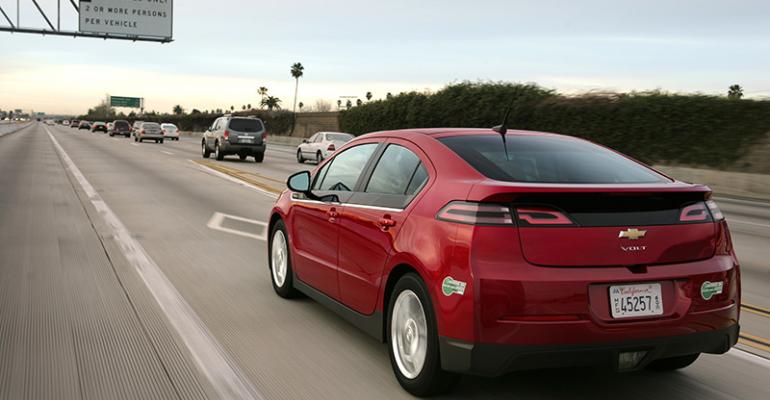DEARBORN, MI – While politicians and pundits wring their hands about too much capacity in the vehicle battery industry, one industry executive is worried about there soon not being enough.
“If I project out over five years, I worry about undercapacity,” Prabhakar Patil, CEO of LG Chem Power, tells attendees here at the 2014 Automotive World Megatrends conference.
Patil cites a variety of reasons for his optimism, which is in stark contrast to many industry-watchers who say electrified vehicles, either all-electric models or partial electrics, such as plug-in hybrid-electric vehicles, will take decades to achieve the level of popularity of internal-combustion-engine vehicles.
While WardsAuto data shows sales of EV and PHEV sales growing at a faster clip than those early sales of hybrid-electric vehicles, EV and PHEV U.S. market share in 2013 was a relatively paltry 0.6% to HEVs’ 3.2% slice.
An LG Chem battery plant in Holland, MI, which opened in 2011 to supply batteries to the Chevrolet Volt extended-range EV, just began shipping units last fall and is operating at a sliver of planned capacity, as are some other automotive battery operations including Nissan’s Smyrna, TN, plant.
Future product programs by automakers are one source of Patil’s optimism, as is the choking pollution being seen in developing vehicle markets.
“All the right drivers are in place, (including) in terms of what’s happening in China with regard to the air pollution in some of the cities,” he tells WardsAuto on the sidelines of the conference. “When you go to either Beijing or Shanghai the pollution has become unbearable, like we used to have in L.A. some years ago, so something has to give.”
But Patil also sees electrified-vehicle demand rising in developed markets, including the U.S., “because the HEV is already what I call a right-side-up business” with fairly stable demand.
Li-Ion to Continue to Dominate
The LG Chem CEO, who spent 27 years at Ford, including five years as the chief engineer of the Ford Escape Hybrid, acknowledges low consumer awareness and lack of education about EVs and PHEVs have hurt sales of available models.
“People who have driven a Volt would want to buy a Volt, but until they get into a Volt they don’t really have any idea of what it can or cannot do, so there is a lot of confusion,” he says of the car, which has a 16-kWh LG Chem lithium-ion pack.
Patil also believes the presence of more electrified vehicles on the roads and in American driveways will spur demand.
“I think it is just going to take time for people to hear (about EVs and PHEVs) from their neighbors and friends,” he says.
On the topic of battery chemistry, Patil believes Li-ions will dominate for the next 15-20 years, citing their increased likelihood to perform with no degradation for a typical 10-year, 100,000-mile (160,934-km) vehicle lifecycle, as well as their reduced cost.
Navigant Research last year predicted Li-ions, when purchased in large volume, would drop from $500/kWh in 2013 to $300/kWh in 2015, and to less than $200/kWh by 2020, citing increased efficiencies in manufacturing and a maturation of the supply chain.
Patil says LG Chem continues to work at removing cost from its Li-ions via a reduction in cobalt and nickel content.
Meanwhile, Patil gives credit to Tesla founder Elon Musk’s ambitious growth plans, citing Musk’s decision to establish a battery plant in the southwestern U.S. to supply 500,000 EVs.
The $5 billion plant, which is set to come online by 2016 and make 35 gigawatts’ worth of battery cells by 2020, was a smart decision, he says.





